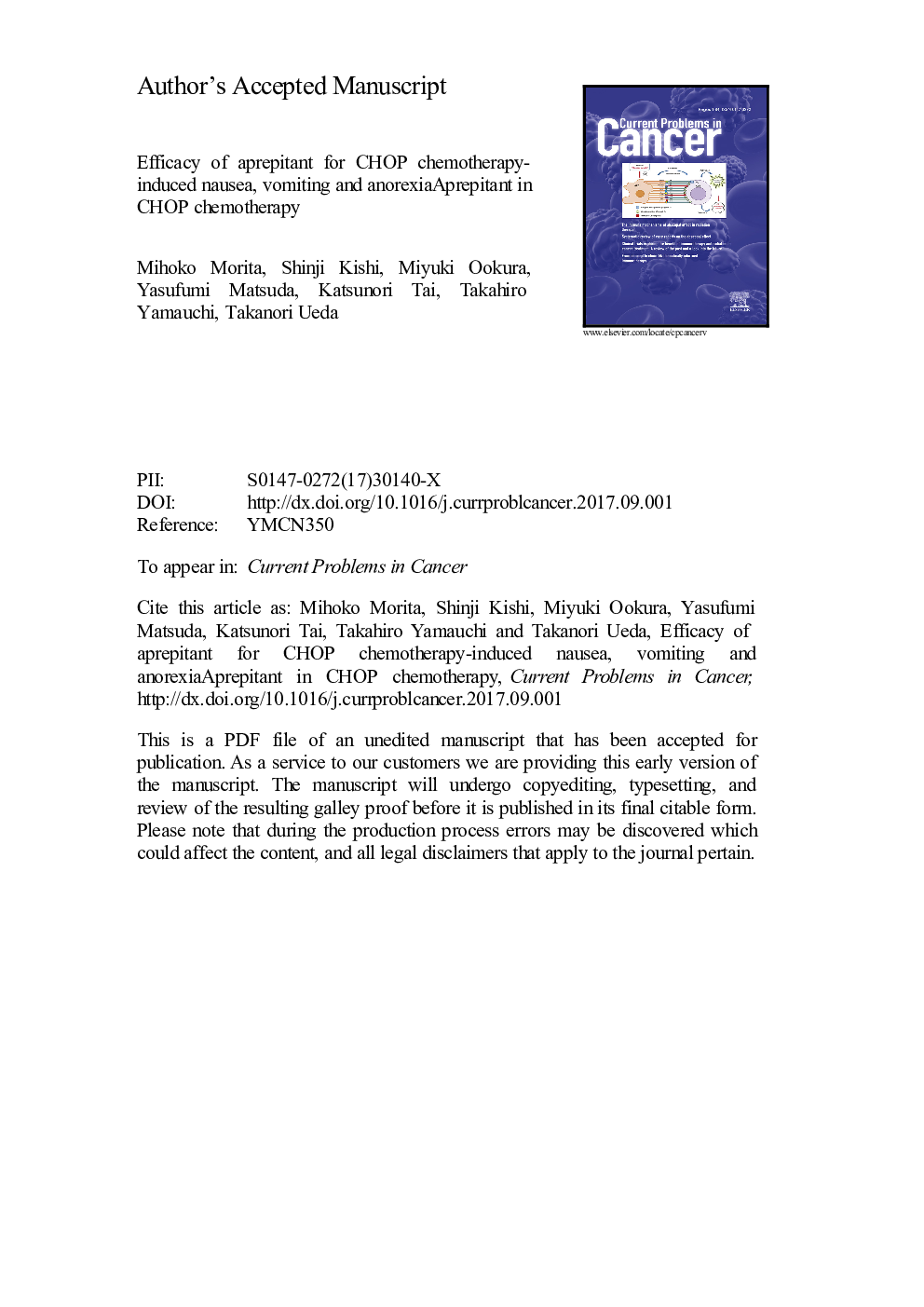| Article ID | Journal | Published Year | Pages | File Type |
|---|---|---|---|---|
| 8733885 | Current Problems in Cancer | 2017 | 16 Pages |
Abstract
The objective of this study was to evaluate whether aprepitant in addition to 5-HT3 receptor antagonist is useful for preventing chemotherapy-induced nausea and vomiting (CINV) and anorexia in patients receiving CHOP therapy, and to evaluate the relationship between in vivo kinetics of plasma substance P and these adverse events. Patients with malignant lymphoma who received CHOP chemotherapy or THP (THP-ADR)-COP therapy were investigated for CINV and anorexia for 5 days after the start of chemotherapy. With the first course of chemotherapy, all patients received only granisetron on day1 as an antiemetic. Patients who experienced nausea, vomiting, or anorexia exceeding grade 1 in the first course received aprepitant for 3 days in addition to granisetron with the second course of CHOP chemotherapy. Plasma substance P concentrations at 24 and 72 hours after chemotherapy were measured. Nineteen patients were evaluated. Nausea, vomiting, or anorexia was observed with the first course in 7 of 19 patients. During the second course with aprepitant, no patients experienced vomiting, and the toxicity grade of nausea, vomiting, or anorexia was decreased compared with those in the first course. Substance P concentrations showed no differences after chemotherapy, in patients with nausea, vomiting, or anorexia and in patients without. The addition of aprepitant to 5-HT3 receptor antagonist appears effective for CINV or anorexia for patients who received CHOP chemotherapy.
Related Topics
Health Sciences
Medicine and Dentistry
Hematology
Authors
Mihoko MD, PhD, Shinji MD, PhD, Miyuki MD, Yasufumi MD, PhD, Katsunori MD, PhD, Takahiro MD, PhD, Takanori MD, PhD,
